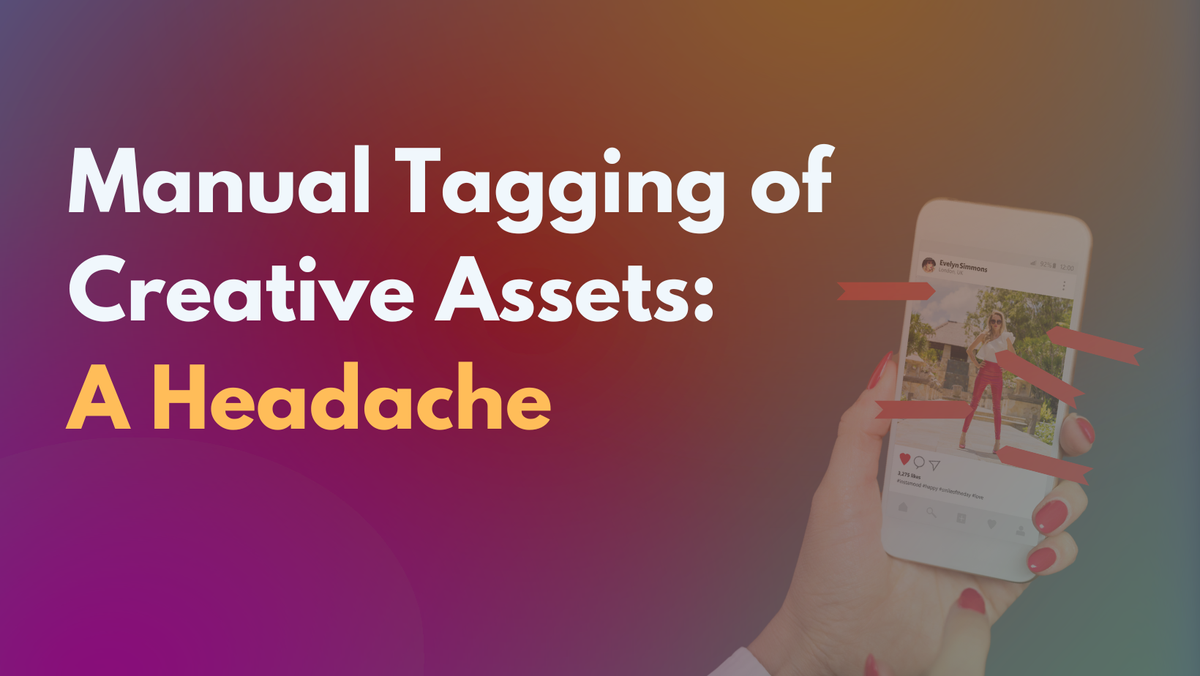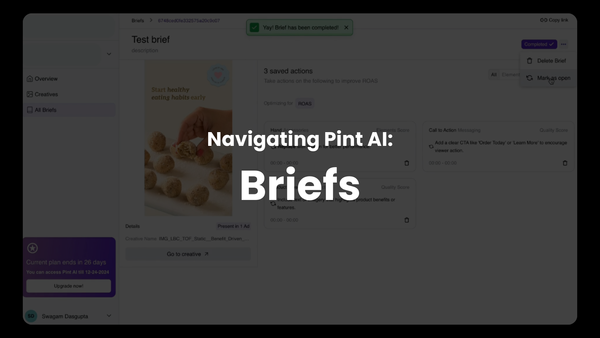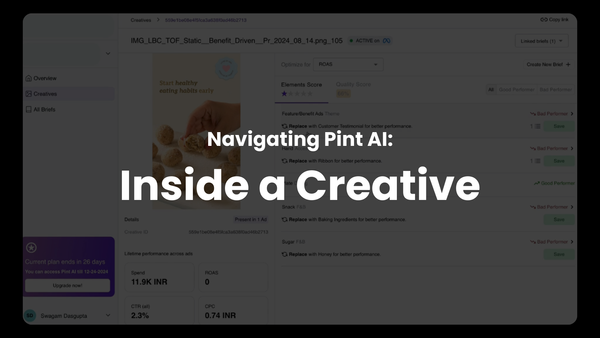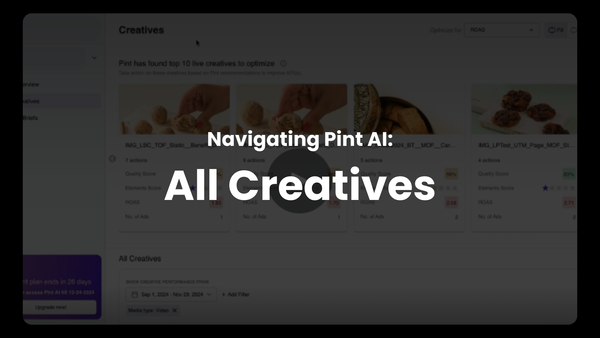Manual Tagging of Creative Assets: A Headache
Manual tagging of creative assets and their elements has been a key part of marketers' jobs. But is manual tagging really effective?

For the longest time, performance marketers and creative teams have been manually tagging their creative assets, all in different ways. Now, if you have to understand what creatives are working and why, you need to go one step deeper and tag the elements within the creative as well — logo size, it's position, background color, objects inside the creative, the timing of when these objects come on screen for a video and much, much more.
Doing this process manually for one creative is a big task. Now imagine tagging these elements across multiple creatives, across multiple ad sets, multiple campaigns across multiple channels. That's pretty much an impossible task.

And yet, we see agencies continue to manually tag these elements. The very rich and enterprising agencies, can afford to spend on resources to build dashboards of their own to do this job. But on the whole, most agencies don't have the capacity, the time, or the money to invest in building a custom solution.
While manually tagging does allow a large degree of control — is it really that effective? I don't think so. Here's why:
1. Time-Consuming
Manually tagging each element in a creative asset can be extremely time-intensive, especially if dealing with a large volume of assets. This can lead to significant delays in workflow and productivity.
2. Human Error
Manual processes are prone to errors. Inconsistent or incorrect tagging can lead to confusion and make it difficult to retrieve assets accurately. Over time, the accumulation of errors can severely impact the efficiency of the tagging system.
3. Scalability Issues
As the volume of creative assets grows, maintaining a manual tagging system becomes increasingly challenging. Scaling up manual tagging efforts to accommodate thousands of assets can be impractical and costly.
4. Inconsistency
Different individuals might use varying terminology or methods for tagging, leading to inconsistency. This inconsistency can make it harder to search for and categorize assets effectively, reducing the utility of the tagging system.
5. High Resource Allocation
Allocating resources (time, labor, and money) to manual tagging can divert those resources from other critical tasks. It may require dedicated personnel, training, and ongoing management, which can be costly for an organization.
6. Limited Insights
Manual tagging might not capture the nuanced details and relationships between different elements within a creative. Automated tools, especially those leveraging AI, can often identify more subtle and complex patterns that manual tagging might miss.
7. Slower Adaptation to Changes
In a fast-paced marketing environment, the ability to quickly update and adapt tags to reflect new trends, products, or campaigns is crucial. Manual tagging systems are typically slower to adapt, leading to outdated or less relevant tags over time.
A Space Ripe for Automation
The above reasons are why I believe this problem must be solved, and must be solved today! The space is ripe for disruption and companies building MarTech specifically in ad analytics will stand to benefit.
This is also a big opportunity that we see for Pint AI.
With the falling costs of AI models — specifically computer vision — that allow the extraction of these elements, it is now possible to build systems to identify, track, and tag them with relative ease and high accuracy.
And what's more, marketers are waiting for this kind of a tool; companies that are able to solve this will provide immense value, and build a business to be reckoned with.





